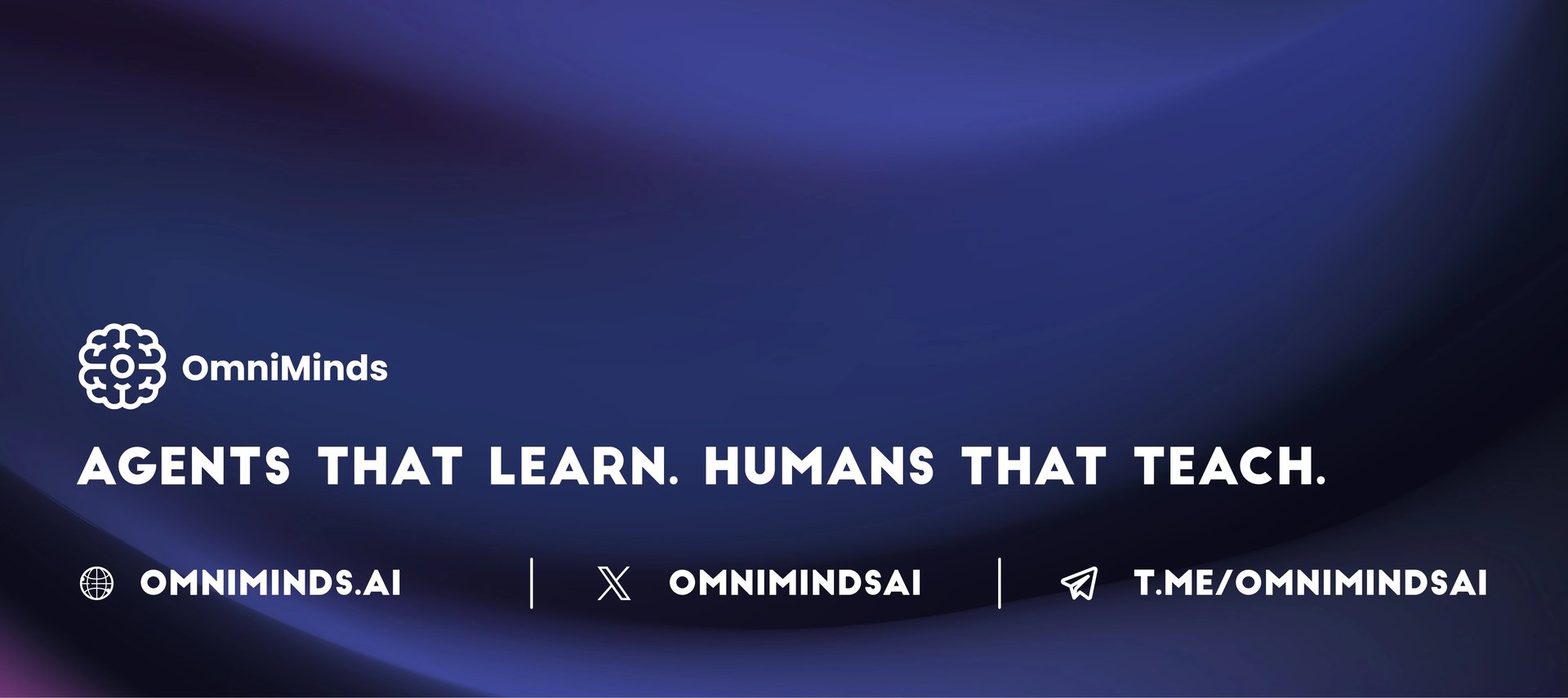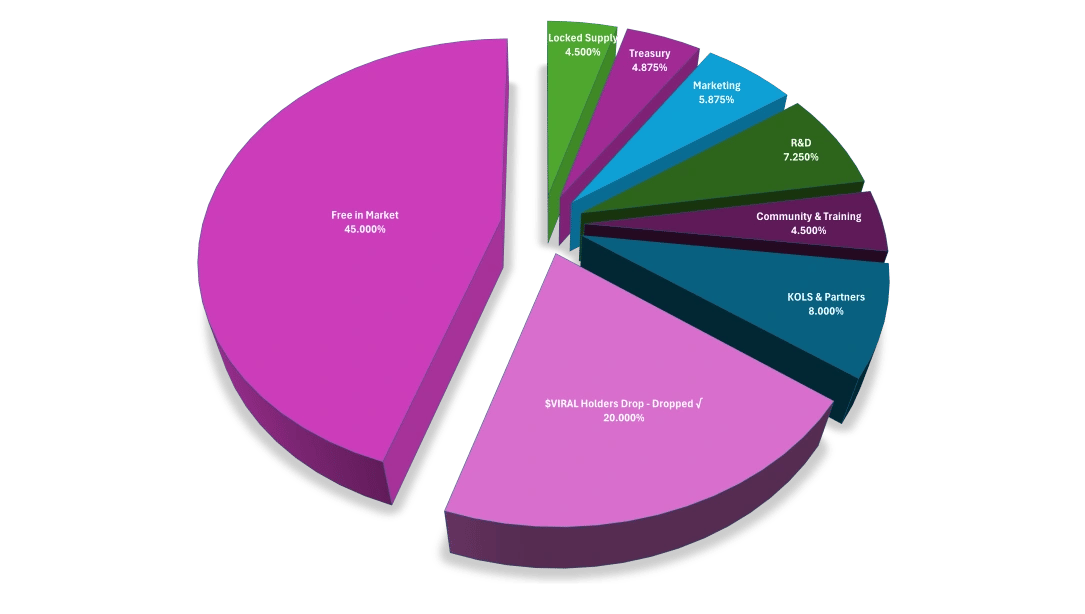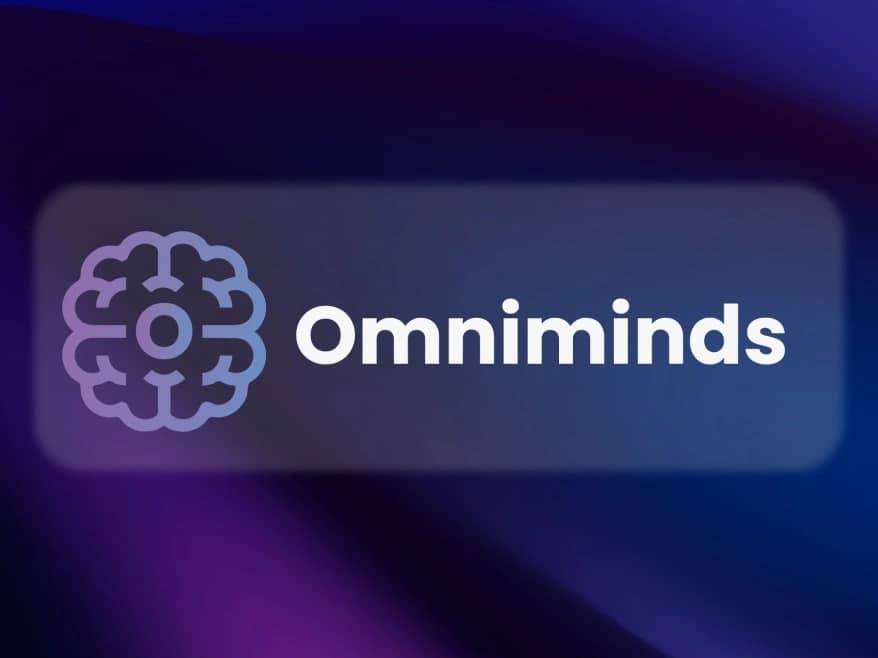위키 구독하기
Share wiki
Bookmark
OmniMinds
OmniMinds
OmniMinds(옴니마인즈)는 2025년 5월에 출시된 컴퓨터 사용 에이전트(CUA, Computer Use Agents) 개발에 중점을 둔 오픈소스 플랫폼입니다. 크라우드소싱 액션 데이터셋, 오픈소스 도구 및 에이전트 모델을 통해 강력한 컴퓨터 사용 에이전트의 기반을 구축하는 것을 목표로 합니다. [1]

개요
OmniMinds는 인간과 유사한 방식으로 컴퓨터 애플리케이션과 상호 작용할 수 있는 AI 에이전트의 생성 및 배포를 가능하게 하는 오픈소스 이니셔티브로 소개됩니다. 이 프로젝트의 핵심 개념은 대규모의 인간 컴퓨터 상호 작용 데이터셋을 수집하고 활용하여 이러한 에이전트를 훈련하는 것입니다. 이러한 접근 방식은 기존 API를 통해 일반적으로 접근할 수 없는 작업의 자동화를 가능하게 합니다. 이 플랫폼은 이러한 컴퓨터 사용 에이전트의 훈련, 배포 및 수익 창출을 지원하도록 설계된 도구와 인프라를 제공합니다. [1] [2]
OmniMinds의 개발 로드맵은 플랫폼 출시 직후 시작된 1단계로 시작되었습니다. 이 초기 단계는 5주 동안 3개의 스프린트로 구성되며, 에이전트 개발을 지원하기 위해 백엔드 인프라의 재구축, 리브랜딩 및 재배포에 중점을 둡니다. 이 프로젝트는 ViralMind 기반을 더 강력한 시스템으로 발전시키는 것을 기반으로 합니다. [1] [2]
장기적인 비전에는 CUA가 검색하고, 서로 협력하고, 사용자를 대신하여 행동하고 거래하고, 개인 네트워크에 액세스하고, 인간의 승인을 받고, 다양한 서비스를 제공할 수 있도록 하는 더 많은 인프라 구성 요소가 포함됩니다.
제품/기능
- The Dojo(도조): 이 구성 요소를 통해 사용자는 컴퓨터 애플리케이션 사용 방법을 시연할 수 있습니다. 사용자는 이러한 시연을 업로드하여 $OMNIS 토큰 형태의 보상을 받을 수 있습니다. [1] [2]
- The Arena(아레나): 이 기능은 훈련된 CUA를 요청하려는 사용자를 위한 것입니다. 사용자는 AI 요구 사항을 지정할 수 있으며, 플랫폼은 Dojo를 통해 수집된 고품질 시연을 사용하여 이러한 에이전트의 훈련을 용이하게 하는 것을 목표로 합니다. [1]
- LaunchBay(런치베이): 사용자 액션 요청 또는 MCP, A2A 또는 직접 사용자 트리거를 통한 다른 AI 에이전트와의 통합을 기반으로 훈련된 에이전트를 실행하고 수익을 창출할 수 있습니다. 커뮤니티에서 생성된 데이터를 사용하여 훈련되고 있습니다. [1] [2]
생태계
OmniMinds는 컴퓨터 사용 에이전트의 개발 및 운영을 지원하는 생태계를 구축하고 있습니다. 이 생태계에는 에이전트 모델을 훈련하고 실행하는 데 필요한 인프라가 포함됩니다. 계획된 생태계의 주요 구성 요소에는 분산형 서비스 마켓플레이스와 에이전트 간 결제를 위한 인프라가 포함됩니다. 이 생태계는 에이전트가 제공하는 자동화된 서비스의 수익 창출을 가능하게 하도록 설계되었습니다. [1] [2]
사용 사례
대상 사용자는 다음과 같습니다.
- 기여자: 에이전트를 훈련하고 보상을 받기 위해 데이터 시연을 제공하는 개인
- 개발자: 오픈소스 도구 및 에이전트 모델을 구축하고 작업하는 사람들
- 커뮤니티: 특정 요구 사항에 맞는 에이전트를 훈련하기 위해 플랫폼을 활용할 수 있는 그룹
- 기업: 내부 워크플로우 또는 서비스를 자동화하기 위해 특수 에이전트가 필요할 수 있는 기업 [1]
이 플랫폼은 현재 컴퓨터에서 가능한 모든 작업의 자동화를 가능하게 하는 것을 목표로 합니다. 데이터셋 미리 보기에 표시된 작업의 예는 다음과 같습니다.
- 메모장 열기, 파일 로드, 텍스트 검색, 인스턴스 계산 및 새 파일에 계산 저장
- 시계 앱에서 타이머 설정
- VS Code와 같은 애플리케이션의 설정을 수정하여 특정 오류 보고를 비활성화
- Edge 및 Chrome에서 사이트 데이터를 닫을 때 자동으로 삭제하도록 브라우저 설정 구성
- 쉼표로 구분된 텍스트를 표 형식으로 변환
- 문서를 PDF 형식으로 내보내기
- 바탕 화면 배경을 단색으로 변경
- Chrome 프로필에서 사용자 이름 업데이트
- VLC Player와 같은 애플리케이션의 볼륨 설정 조정 [1]
아키텍처
OmniMinds의 아키텍처는 컴퓨터 인터페이스와 상호 작용하는 컴퓨터 사용 에이전트(CUA)의 개념을 중심으로 합니다. API에만 의존하는 에이전트와 달리 CUA는 마우스 움직임 및 클릭과 같은 인간의 행동을 시뮬레이션하고 화면에서 시각 정보를 해석하여 애플리케이션을 작동하도록 설계되었습니다. 이 플랫폼은 자연어 지침과 시각적 상태를 특정 컴퓨터 작업에 매핑하는 비디오-언어-액션 데이터셋을 사용하여 이러한 에이전트를 훈련합니다. 이 프로젝트는 아키텍처의 일부로 "CPU-as-currency" 모델을 언급하여 컴퓨팅 리소스가 생태계의 운영 또는 보상 구조에서 역할을 할 수 있음을 시사합니다. [1] [2]
토큰 경제
OmniMinds 토큰($OMNIS)
$OMNIS 토큰은 OmniMind 생태계 내에서 유틸리티 자산으로 기능하며 AI 훈련 데이터의 생성 및 개선을 지원합니다.
특정 최소 임계값을 가진 토큰 보유자는 도조에서 에이전트를 요청하고 보상 풀에 자금을 지원하거나 사용자 지정 AI 에이전트 개발을 위해 큐레이션된 데이터셋을 내보낼 수 있습니다. 이 토큰은 지원되는 거래소에서 $USDC 및 $SOL과 같은 자산에 대해 거래할 수 있습니다. [1]
할당
$OMNIS의 총 공급량은 플랫폼의 개발, 운영 및 커뮤니티 참여를 지원하기 위해 다양한 기능 영역에 분산됩니다.
- 잠금 공급: 총 공급량의 4.5%는 생성자 지갑과 관련된 Jupiter Lock 계약을 통해 2026년 5월까지 잠겨 있습니다.
- 이전된 재무부: 4.875%는 2025년 11월까지 6개월 동안 이전되며 생성자 지갑을 통해 액세스할 수 있습니다.
- 마케팅: 5.875%는 마케팅 및 상장 이니셔티브에 할당됩니다. 이 부분은 전용 지갑에 보관되며 지속적인 홍보 활동에 사용할 수 있습니다.
- 기술 R&D: 7.25%는 2025년 11월까지 6개월 동안 이전되며 기술 개발에 지정되고 R&D 지갑을 통해 배포됩니다.
- 커뮤니티 및 교육: 4.5%는 커뮤니티 인센티브 및 교육 지급에 예약되며 에스크로 및 관련 활동 자금 조달에 사용되는 지갑에 보관됩니다.
- KOL 및 파트너: 8%는 주요 의견 리더 및 파트너와의 협업에 지정됩니다. 이 풀에서의 배포는 이전 일정을 따를 수 있습니다.
- $VIRAL 보유자 에어드롭: 20%는 에어드롭 이니셔티브의 일환으로 이전 $VIRAL 토큰 보유자에게 출시 시 배포되었습니다.
- 공개 시장: 65%는 공개 거래에 사용할 수 있으며, 출시 시 45%가 출시되고 에어드롭 이후 20%가 추가로 출시됩니다.

잘못된 내용이 있나요?
